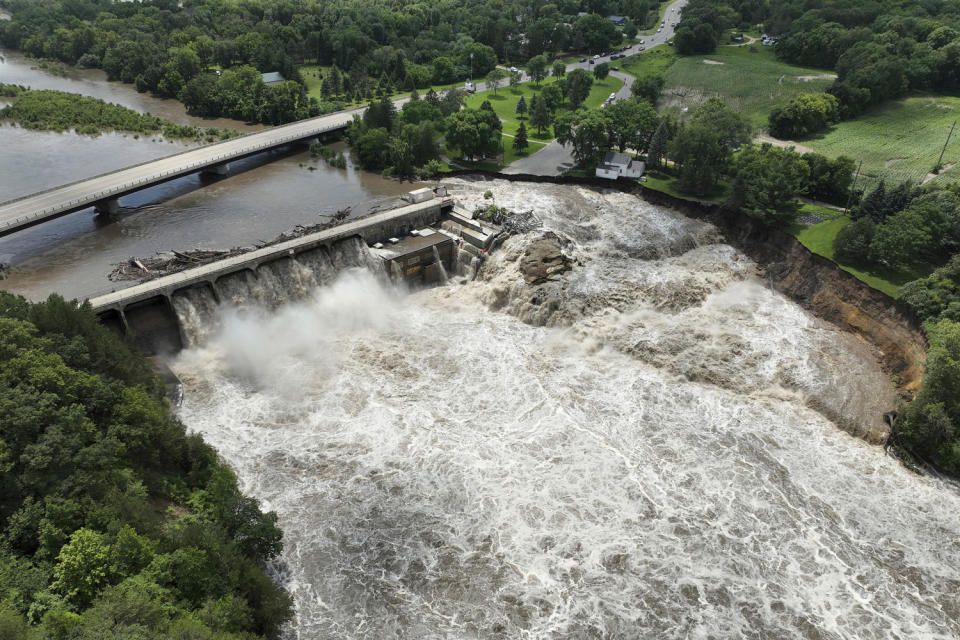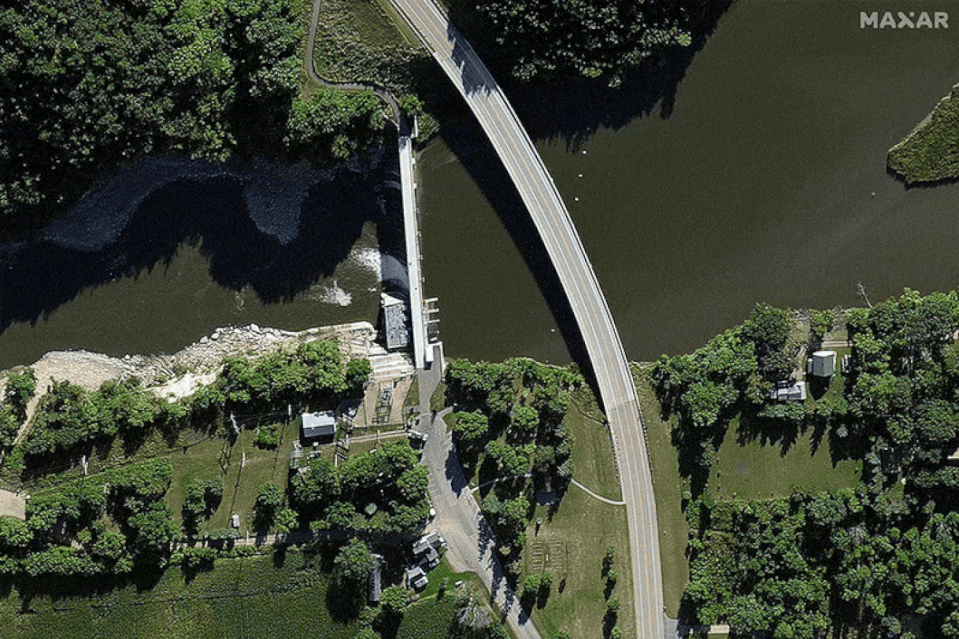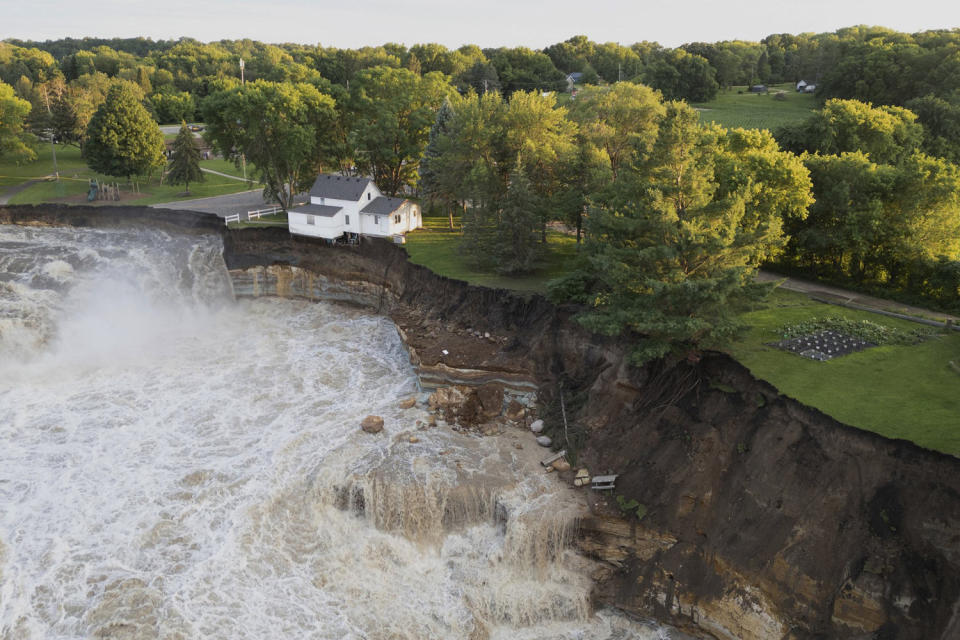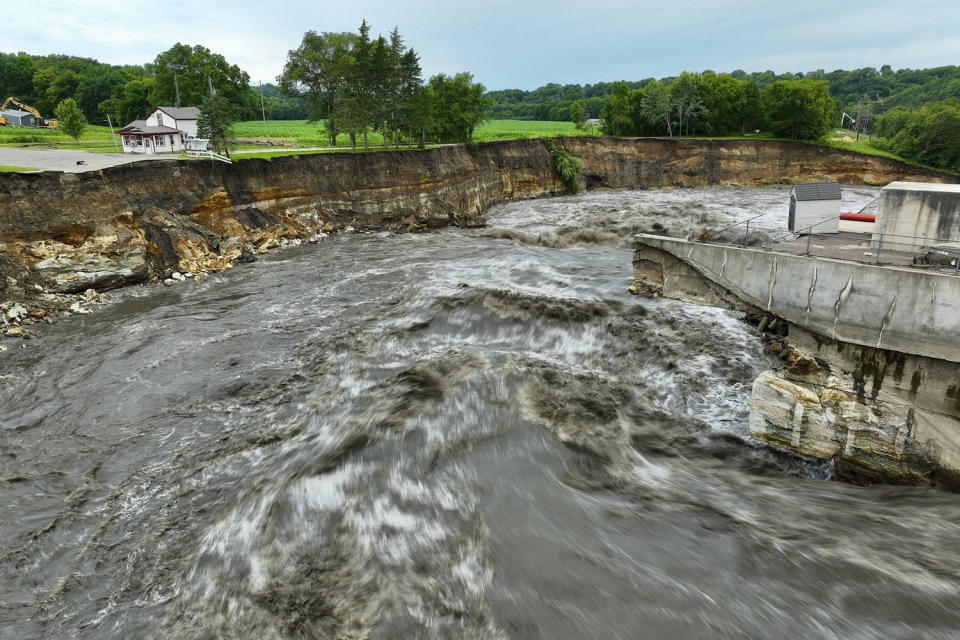The partial failure of Minnesota’s 114-year-old Rapidan Dam highlights the risks many communities face as the number of deteriorating dams increases and climate change makes rains more frequent and intense.
Before the breach, which caused floodwaters to pile up on the banks of the Minnesota River and swallow a waterfront home, local leaders in Blue Earth County, Minnesota, were considering whether to demolish the old structure or make costly, long-term repairs. Regulators deemed the dam a “significant” hazard, and it was graded as “poor” as of April 2023, according to the National Inventory of Dams.
Nearly 4,100 dams are categorized at the same level of risk and condition — or worse — according to an NBC News analysis of inventory data. Every state has at least one such dam. Ohio has the most at 373.
Overall, America’s dams — more than 91,000 in total — are aging. Requires quite expensive rehabilitation. Few were designed for today’s climate, with a warmer atmosphere that can hold — and dump — more water. The number of people living in flood zones below these dams is constantly increasing.

The average US dam is 57 years old, and dam safety experts say the pace of investment is too slow to keep the infrastructure up to the standards it was built for, much less to deal with worsening climate hazards.
“It’s falling behind,” said Sharon Tapia, president of the Association of State Dam Safety Officials. “We are in a situation where we see the need for more and more dams to be rehabilitated or repaired to meet current standards.”
The association estimated in a report last year that it would take $157.5 billion to bring non-federal US dams up to par. That only applies to today’s safety standards — it doesn’t take into account improvements to address additional risks in the future from climate change, she said.
President Joe Biden’s 2021 infrastructure bill included $3 billion for dam safety projects — a pittance compared to the total need.
It is too early for scientists to say whether global warming played a role in the partial failure of the Rapidan Dam, but the conditions that caused it were more likely.
For every degree Fahrenheit of warming, the atmosphere can hold and deliver about 3% to 4% more moisture, giving storms a stronger punch and making previously rare rainfall totals much more rare. common. This, in turn, increases the risk of catastrophic flooding.


The Rapidan dam, built in 1910 and managed by Blue Earth County, was described on the county’s website as “in a state of disrepair.” After floods in 2019 and 2020, a power generation company stopped leasing the dam, leaving it without a hydropower operator.
But the Federal Energy Regulatory Commission, which regulates the dam, was not overly concerned about the structure’s integrity as recently as last month. According to FERC documents, the dam was inspected on May 21 and “found to be in overall satisfactory condition.”
“No major dam safety deficiencies were noted that would require immediate remedial action,” the letter said, although it noted severe concrete deterioration, exposed rebar and cracking that it said should be closely monitored. .
The inspection, an analysis of the safety and stability of the structure, was separate from the assessment by the National Inventory of Dams, which evaluates the overall performance of the project, a FERC spokesman said.
Blue Earth County officials were weighing whether to remove the dam, at a cost of more than $82 million, or repair it for about $15 million. Both options had drawbacks: Repairs could last only 40 years, though planning and obtaining permits could take five years, according to engineering documents from 2021. A county spokesman said officials could not answering questions, rather than providing updates at news conferences. .


The partial dam failure came after three days of heavy rain that brought the Minnesota River to its third-highest flood level since at least 1881, according to Brennan Dettmann, a National Weather Service meteorologist based in the Twin Cities Cities.
In the Mankato area, where the dam is located, 7 to 8 inches of rain fell over three days, based on an analysis by Kenny Blumenfeld, senior climatologist at the Minnesota State Climate Office.
“That angle of the Minnesota River hit pretty hard,” he said, adding that in southern Minnesota, there would be a .5% to 2% chance of such heavy rains occurring each year.
Bill McCormick, who led Colorado’s dam safety program from 2011 to 2021, said heavy rains have added pressure across the nation.
“We are experiencing increasingly severe storms that are testing our aging infrastructure. We are now seeing more storms at spillways and dams that have not seen as many storms in any given year,” he said. “All those aging systems are being tested more and more now.”
Housing development is also raising hazard levels for some dams, McCormick said, as people settle in formerly rural areas, where dams built for farmland now protect allotments.
Hiba Baroud, an assistant professor of civil and environmental engineering at Vanderbilt University, said the partial failure of the Rapidan, among other things, should prompt lawmakers to look hard at how to strengthen dam infrastructure and triage repairs.
“We need to think proactively about anticipating potential scenarios for all the dams in the US and start prioritizing the dams that need to be rehabilitated or upgraded to avoid a situation like this,” said she, “rather than seeing a big event and using it. it’s a wake-up call about this particular dam.”


From 2013 to 2023, 283 dams in the US experienced some type of failure, according to data provided by the Association of State Dam Safety Officials and analyzed by NBC News. Some did not cause major problems, but others had serious consequences. In 2019, a dam failure occurred during a blizzard that left a Nebraska man’s home, drowning him.
Tapia said dam rehabilitation is too often constrained by insufficient funding and lengthy environmental permitting processes.
“They’re taking too long to sort out because of the funding issues and the licensing issues,” she said. “The engineering is usually the easiest part.”
This article was originally published on NBCNews.com